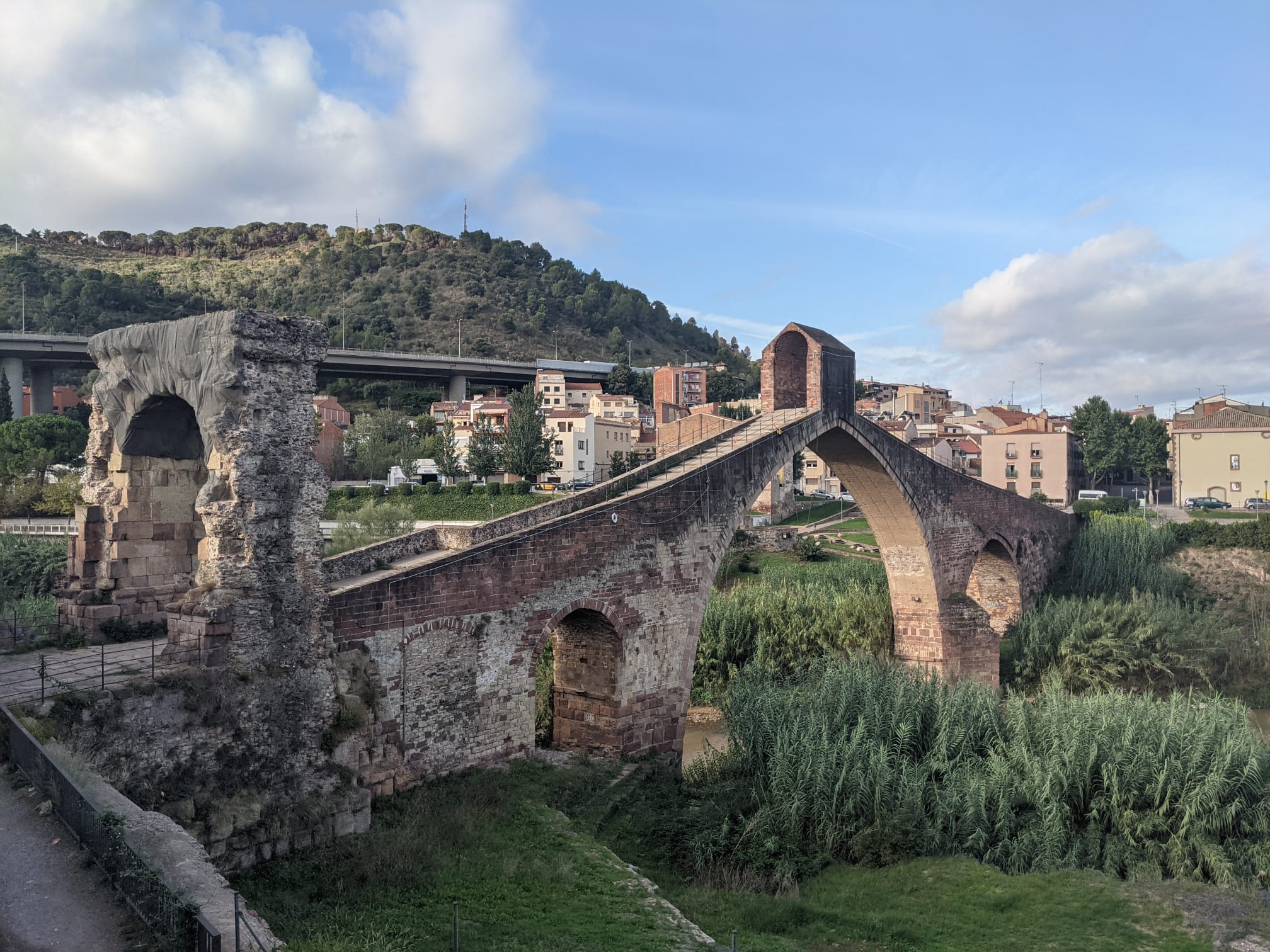The Devil’s Bridge, Catalan mythology brought to life
Legends used to explain our world but often incorporate supernatural elements too

Be they tales of dragons, water nymphs, or the devil himself, Catalonia’s rich tradition of mythology and legends have passed through generations for centuries.
Word of mouth was the only way to spread these stories for most of their history until in the late 19th century they began to be collected and written down by well-educated urbanites looking to the countryside and their past.
Much of what we know of Catalonia’s legends today comes from the work of myth collectors such as Joan Amades, an ethnologist and folklorist who documented his work in the Costumari Català, a collection of Catalan customs.
“Legends come from the beginnings of humanity because we need to explain our origins, our stories, our history, through word of mouth,” says Víctor Borràs, a playwright and the director of the theatre company Teatre Nu which organizes the Festival de Llegendes de Catalunya every year in Sant Martí de Tous, in central Catalonia.
“Most legends come from the middle ages,” Borràs says, “but we have some from the 17th, 18th, 19th century.”
The Devil’s Bridge
One story that comes from the middle ages collected by Amades is that of the 'Pont del Diable' in Martorell.
It was originally built by the ancient Romans as part of the Via Augusta road crossing the Iberian Peninsula and was rebuilt on various occasions throughout the centuries. But a local folk tale tells a far more interesting story that gives the bridge its name: the Devil’s Bridge.
The devil is one of the most popular characters in Catalonia’s legends, often presented as a dangerous figure with magic powers that will try to trick people into selling their souls - but also one that can be easily outsmarted.
A long long time ago, the legend goes, there was a maid who had the arduous task of crossing the river every day to collect water. Fed up one day, she said it would be better to just give it to the devil instead of having to make so many journeys. All of a sudden, a knight appears and offers to build a bridge overnight in exchange for her soul, an offer she accepts.
That night, as he’s working fast, the maid realises she’s about to lose her soul and becomes worried, so the innkeeper of where the maid is staying comes up with a plan. She throws a bucket of water on one of the roosters of the house who begins to crow. The devil hears this and thinks daytime is approaching and, as he can only work at night, becomes furious. He throws a stone into the ground and leaves just as the bridge was about to be complete. As he didn’t technically finish the bridge, he didn’t gain the soul of the maid.
As the story passed through generations, different versions started to appear: in another, the devil promised an old lady to build the bridge overnight in exchange for the soul of the first living creature that crossed the bridge the morning after, with the old lady tricking the devil by hiding a cat inside her basket and letting it go just before crossing herself.
The Pont del Diable de Martorell is hardly unique, there are several other Catalan towns with their own Pont del Diable such as Tarragona, Cardona, Pineda de Mar, and several others, and all have similar stories telling the origin of the bridge.
‘Something magic’
“All legends have something magic,” Victor Borràs says. “This kind of mystery is very attractive, mystery with darkness, something we cannot understand.”
The devil is not the only hellish figure found in the pantheon of Catalan mythology. ‘Comte Arnau’ is one of the most well-known characters in local folklore. ‘Comte Arnau’ translates to ‘Count Arnau,’ and he was a knight known for committing two sins for which he will be eternally punished.
The first of which was engaging in relations with an abbess, a nun with a high level of status running a convent. The second sin was not paying his vassals an adequate price for their work in the jurisdiction Comte Arnau presided over. As a result, he would forever roam the land on his horse tortured by the flames spewing from his eyes, mouth, and nose.
Beings that are half-human, half-creature also feature often in Catalan mythology. The ‘cocollana’ is a type of person-dragon hybrid that was once a nun who was punished for her lack of faith.
She was sent to a dungeon, where he skin slowly became scaly due to the lack of light, and she morphed into a crocodile-like creature, before then growing wings as she was still somewhat saintly.
Real-world elements
Many of the stories commonly found in Catalan mythology are centred around real-world elements, such as the Devil’s Bridge. Others tell the story of how peculiarly shaped mountain peaks earned their form.
Water is another common motif in Catalan legends, and in particular water nymphs appear regularly. These water-women are normally depicted as beautiful beings that seduce men and bestow them with happiness and riches but are usually surrounded by mystery or intrigue.
In one story, the water nymph attracts a man to live with her, but he must keep their relationship a secret. However, he tells somebody of their life together, but the instant he does, he loses everything and his life turns to catastrophe.
Another story tells that a group of boys, bored one day, decided to have a competition to see who could hold their breath underwater the longest. One of the boys didn’t rise from the water, and when his friends went to look for him the next day, they found him living happily with one of the water-women.
Podcast
Press play to listen to a podcast all about Catalan myths and legends, complete with a retelling of The Devil’s Bridge.